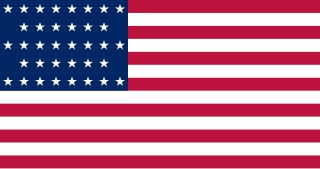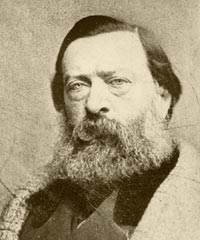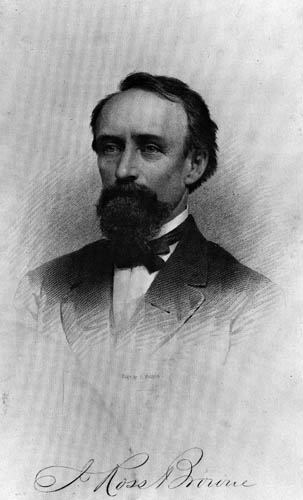
The Klamath people are a Native American tribe of the Plateau culture area in Southern Oregon and Northern California. Today Klamath people are enrolled in the federally recognized tribes:
Bill, Willie or William Logan may refer to:

The Modoc War, or the Modoc Campaign, was an armed conflict between the Native American Modoc people and the United States Army in northeastern California and southeastern Oregon from 1872 to 1873. Eadweard Muybridge photographed the early part of the US Army's campaign.

The Modoc are an Indigenous American people who historically lived in the area which is now northeastern California and central Southern Oregon. Currently, they include two federally recognized tribes, the Klamath Tribes in Oregon and the Modoc Tribe of Oklahoma, now known as the Modoc Nation.
The Snake War (1864–1868) was an irregular war fought by the United States of America against the "Snake Indians," the settlers' term for Northern Paiute, Bannock and Western Shoshone bands who lived along the Snake River. Fighting took place in the states of Oregon, Nevada, and California, and in Idaho Territory. Total casualties from both sides of the conflict numbered 1,762 dead, wounded, or captured.

Brother Jonathan was a paddle steamer that struck an uncharted rock near Point St. George, off the coast of Crescent City, California, on July 30, 1865. The ship was carrying 244 passengers and crew, with a large shipment of gold. Only 19 people survived, making it the deadliest shipwreck up to that time on the Pacific Coast of the United States. Based on the passenger and crew list, 225 people are believed to have died. Its location was not discovered until 1993 and a portion of the gold was recovered in 1996. The ship was also instrumental in setting off the 1862 Pacific Northwest smallpox epidemic, which killed thousands of Indigenous people in the region.

The First Regiment Oregon volunteer Cavalry was a volunteer regiment in United States service Union army that was formed in response to the American Civil War. With men recruited in Oregon and some recruited in surrounding states, the regiment primarily served to protect the state of Oregon and surrounding territories during the American Civil War.

George Gibbs (1815–1873) was an American ethnologist, naturalist and geologist who contributed to the study of the languages of indigenous peoples in Washington Territory. Known for his expertise in Native American customs and languages, Gibbs participated in numerous treaty negotiations between the U.S. government and the native tribes.
The Oregon Superintendent of Indian Affairs was an official position of the U.S. state of Oregon, and previously of the Oregon Territory, that existed from 1848–1873.

Captain Oliver Cromwell Applegate was an American politician, newspaper editor, and Indian agent in the U.S. state of Oregon. A member of the Applegate family that helped open the Applegate Trail, he was raised in Southern Oregon where he later was in charge of the Klamath Indian Reservation. He worked as a scout during the Modoc War, was an Indian agent for all of Oregon, and was editor of the Ashland Tidings and the Klamath Republican.

The District of Oregon was a Union Army command department formed during the American Civil War.

Chief Paulina or Pahninee was a Northern Paiute war leader noted for his successful guerrilla tactics. He is known to have been active from 1859 until his death in 1867.
Billy Chinook was a chief and member of the Wasco tribe. Chinook was a guide for John C. Frémont and Kit Carson, who explored Central Oregon from 1843 to 1844 and from 1845 to 1847. Chinook also served as First Sergeant, U.S. Army Wasco Scouts during the Snake War. Lake Billy Chinook in Oregon is named in his honor.

The Huntington Wagon Road is a historic road in Deschutes County, Oregon, United States.

John Ross Browne, often called J. Ross Browne, date of birth sometimes given as 1817, was an Irish-born American traveler, artist, writer and government agent. In the late 1970s, Ralston Purina opened a chain of seafood restaurants named after Browne, called J Ross Browne's Whaling Station.

At the outbreak of the American Civil War, Oregon also raised the 1st Oregon Cavalry that was activated in 1862 and served until June 1865. During the Civil War, emigrants to the newfound gold fields in Idaho and Oregon continued to clash with the Paiute, Shoshone and Bannock tribes of Oregon, Idaho and Nevada until relations degenerated into the bloody 1864 - 1868 Snake War. The 1st Oregon Volunteer Infantry Regiment was formed in 1864 and its last company was mustered out of service in July 1867. Both units were used to guard travel routes and Indian reservations, escort emigrant wagon trains, and protect settlers from Indian raiders. Several infantry detachments also accompanied survey parties and built roads in central and southern Oregon.

Charles Stewart Drew, also known as C.S. Drew, was a representative in the legislature of the Oregon Territory of the United States and quartermaster general of the territorial militia in the 1850s. During the American Civil War, he was a Union Army officer, serving in the 1st Oregon Cavalry regiment. He eventually reached the rank of lieutenant colonel. In 1864, he led an Army reconnaissance party into southeastern Oregon. The expedition, known as the Owyhee Reconnaissance, traveled through uncharted country from Fort Klamath to Fort Boise and back. Drew was the author of two historically important military reports; one documented Indian attacks on American settlers in the Oregon Territory and the other was his report of the Owyhee Reconnaissance.

The Dalles Mint was to be a branch of the United States Mint in The Dalles in Oregon. Partially constructed in 1869, the planned two-story structure was never completed and the mint was never put into operation. Located in the downtown area of the city, the building was given to the state before it was sold to the public. The Mint building was most recently home to the Erin Glenn Winery.
The California Indian Wars were a series of wars, battles, and massacres between the United States Army, and the Indigenous peoples of California. The wars lasted from 1850, immediately after Alta California, acquired during the Mexican–American War, became the state of California, to 1880 when the last minor military operation on the Colorado River ended the Calloway Affair of 1880.
Between 1851 and 1852, the United States Army forced California's tribes to sign 18 treaties that relinquished each tribe's rights to their traditional lands in exchange for reservations. Due to pressure from California representatives, the Senate repudiated the treaties and ordered them to remain secret. In 1896 the Bureau of American Ethnology report on major native American Indian interactions with the United States Government was the first time the treaties were made public. The report, Indian Land Cessions in the United States (book), compiled by Charles C. Royce, includes the 18 lost treaties between the state's tribes and a map of the reservations. Below is the California segment of the report listing the treaties. The full report covered all 48 states' tribal interactions nationwide with the U.S. government.













